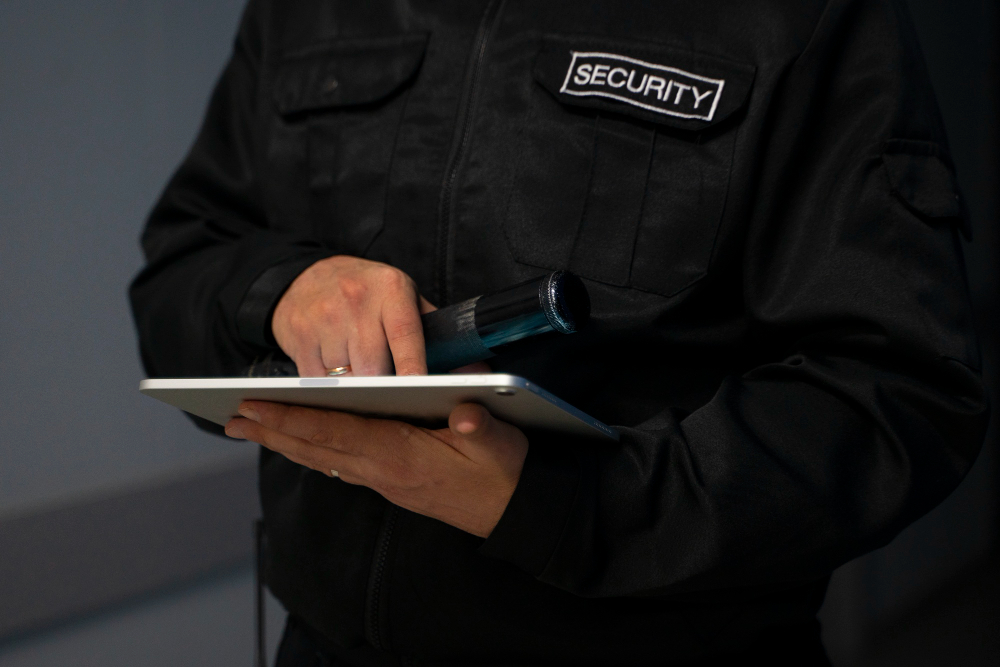
Corporate security has become an essential component of modern business operations. As we step into 2025, the evolving technological landscape, coupled with emerging threats, demands organizations to rethink and redefine their security strategies. This article delves into the most significant trends shaping corporate security in 2025 and beyond.
The Rise of Artificial Intelligence in Security
Artificial Intelligence (AI) is revolutionizing corporate security by enabling smarter and faster decision-making. AI-powered systems can analyze vast datasets in real-time, identifying anomalies and potential threats with remarkable accuracy.
- Predictive Analytics: Leveraging AI to forecast potential security breaches before they occur.
- Facial Recognition Technology: Enhancing access control systems with accurate biometric verification.
- Automated Surveillance Systems: AI-powered cameras capable of detecting unusual activities without human intervention.
AI’s integration into security infrastructure is not only increasing efficiency but also reducing the dependency on manual oversight.
The Growth of Cybersecurity Measures
As businesses continue to digitize, cybersecurity remains a top priority. The interconnected nature of today’s corporate systems makes them vulnerable to sophisticated cyberattacks. Key developments include:
- Zero Trust Architecture: A “never trust, always verify” model ensuring every access request is authenticated.
- Enhanced Encryption Protocols: Protecting sensitive corporate data during transmission and storage.
- Cyber Threat Intelligence: Proactively monitoring and mitigating emerging cyber risks using advanced analytics tools.
With cybercrime projected to cost the global economy trillions of dollars annually, robust cybersecurity frameworks are critical for business continuity.
Integrated Security Systems for Holistic Protection
In 2025, businesses are moving towards integrated security systems that merge physical and digital security measures. This trend is driven by the need to provide a unified approach to threat management.
- Unified Command Centers: Centralized platforms managing physical security (CCTV, alarms) alongside cybersecurity tools.
- IoT-Enabled Security Devices: Smart sensors and alarms capable of real-time communication with central systems.
- Interoperability Standards: Ensuring different security devices work seamlessly together.
Integrated systems reduce response times and provide a comprehensive view of organizational security risks.
Biometric Security Gains Traction
Biometric security solutions are becoming a cornerstone of corporate security strategies. Their ability to provide accurate and non-intrusive verification makes them indispensable.
- Advanced Fingerprint Scanning: Moving beyond basic scans to multi-layered biometric analysis.
- Iris and Retina Scans: Offering unparalleled accuracy for high-security areas.
- Behavioral Biometrics: Monitoring user behaviors such as typing patterns or mouse movements to identify anomalies.
As biometrics become more affordable, we expect widespread adoption across industries.
Cloud-Based Security Solutions
Cloud technology is transforming corporate security by offering scalable and cost-effective solutions. Businesses are increasingly turning to the cloud for managing their security operations.
- Cloud Video Surveillance: Allowing remote monitoring and storage of surveillance data.
- Access Control Systems: Cloud-based platforms providing real-time updates and analytics.
- Data Recovery and Backup: Ensuring critical security data is always available, even after a breach.
Cloud-based security enhances flexibility while reducing the need for extensive on-premise infrastructure.
Employee-Centric Security Training
Human error remains one of the leading causes of security breaches. As a result, companies are prioritizing employee training programs to build a security-conscious workforce.
- Gamified Training Modules: Making security training engaging and impactful.
- Real-World Simulations: Preparing employees to respond effectively to simulated cyberattacks or physical threats.
- Regular Updates: Keeping employees informed about the latest security threats and best practices.
By empowering employees, organizations create a proactive first line of defense.
Data Privacy and Compliance
Regulatory compliance and data privacy laws continue to evolve, putting pressure on businesses to prioritize secure practices.
- GDPR and Beyond: Adapting to global data privacy regulations to avoid hefty fines.
- Third-Party Risk Management: Ensuring vendors and partners adhere to the same security standards.
- Privacy-By-Design: Embedding privacy measures into security solutions from the ground up.
Staying compliant not only protects organizations legally but also builds trust with clients and stakeholders.
Drones and Robotics in Security
The use of drones and robotics is reshaping physical security measures. These technologies are proving to be effective in monitoring and safeguarding large premises.
- Autonomous Patrol Drones: Offering aerial surveillance for large industrial or corporate sites.
- Robotic Security Guards: Enhancing physical security with AI-driven patrol bots.
- Incident Response: Using drones to assess and manage security breaches quickly.
These innovations are particularly useful for industries requiring extensive perimeter security.
The Shift to Proactive Security Strategies
Proactive security strategies are replacing reactive measures, emphasizing prevention over damage control.
- Threat Hunting Teams: Dedicated teams identifying and neutralizing threats before they materialize.
- Advanced Monitoring Systems: Continuous observation for suspicious activities.
- Incident Simulation Drills: Regularly preparing for various attack scenarios to ensure readiness.
By adopting proactive strategies, businesses minimize vulnerabilities and enhance overall security resilience.
Sustainability in Corporate Security
Sustainability is becoming a significant consideration in security systems, as organizations seek eco-friendly solutions.
- Solar-Powered Surveillance Cameras: Reducing energy consumption while maintaining functionality.
- Energy-Efficient Data Centers: Lowering the carbon footprint of digital security infrastructure.
- Recyclable Security Hardware: Minimizing electronic waste through sustainable manufacturing.
Sustainability not only aligns with corporate social responsibility but also appeals to environmentally conscious clients.
Corporate security in 2025 is evolving rapidly, driven by technological advancements and the need to address sophisticated threats. Businesses that embrace these trends will not only protect their assets but also gain a competitive edge in their respective industries.
